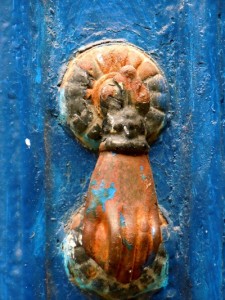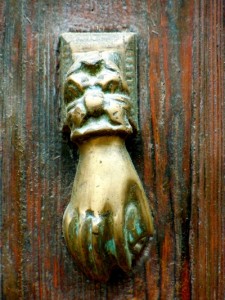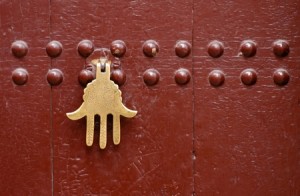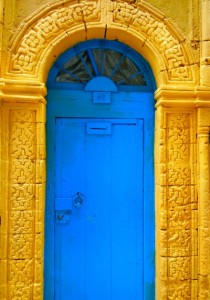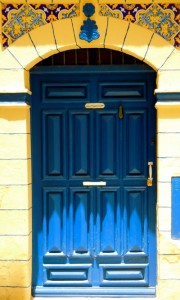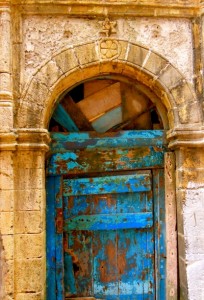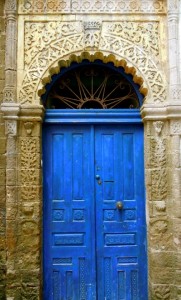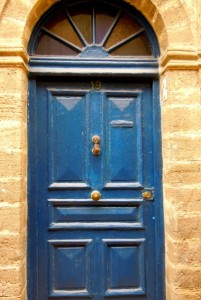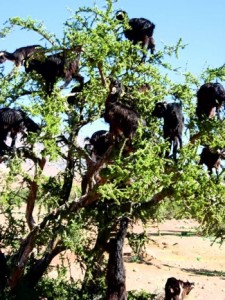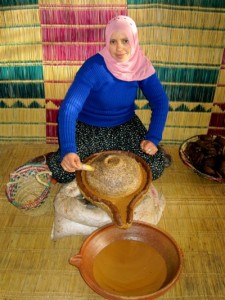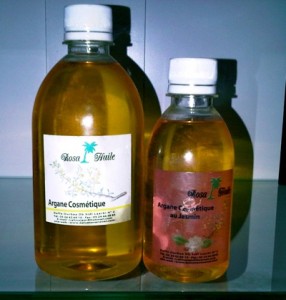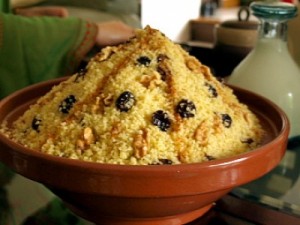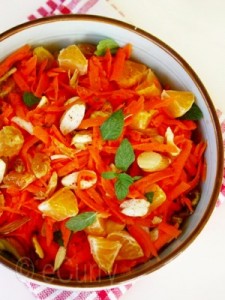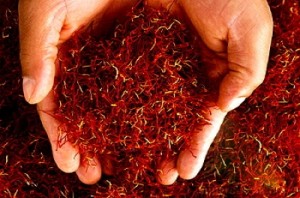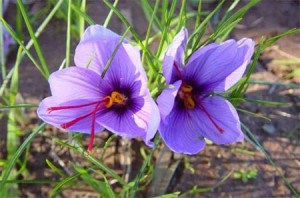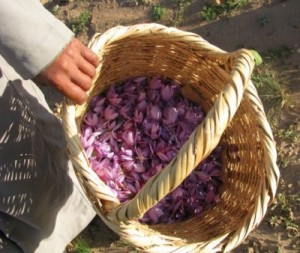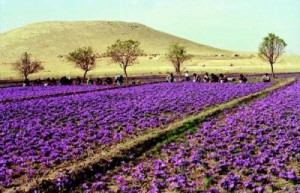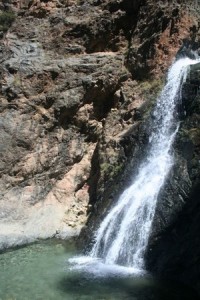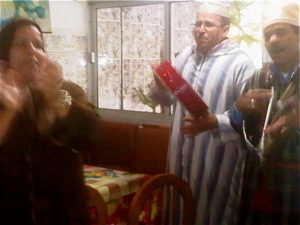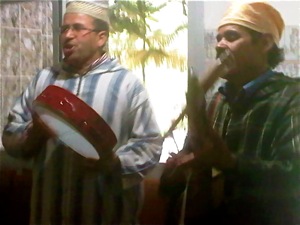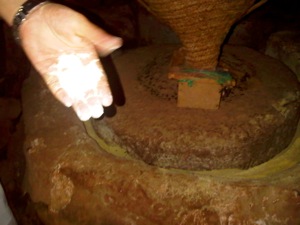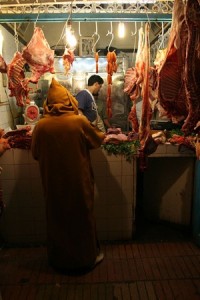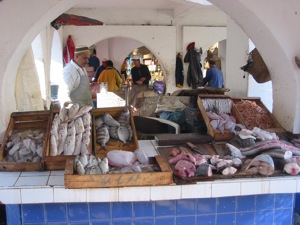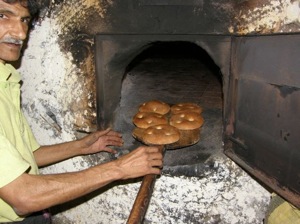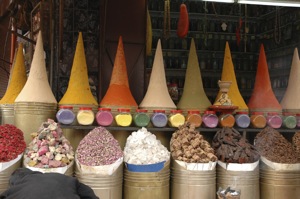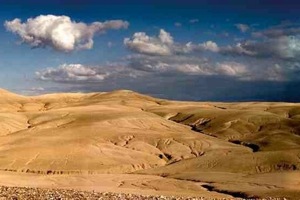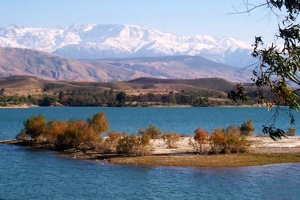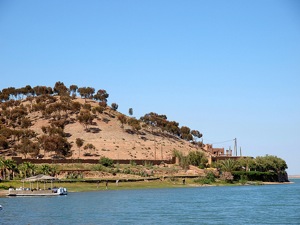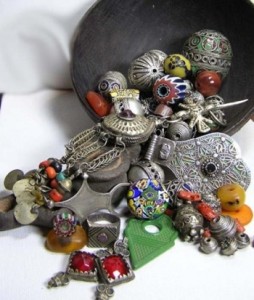
Moroccan Bowl of Jewelry
Morocco’s Treasure Hunting Tour of North African Silver Jewelry & Trade Beads is on the calendar for Fall 2011. Come Travel to Morocco and enjoy fourteen days of sheer jewelry bliss. Save your Morocco tour dates: September 16th – 29th, 2011. Bead your Way Through Morocco is a Moroccan Jewelry & Trade Bead Treasure Hunting Tour created by Travel Exploration Morocco and hosted by Sarah Corbett, a Tribal Jewelry Expert. Travel Exploration Morocco is a New York and Ouarzazate based Travel Agency and the first to offer this customized Moroccan Jewelry & Trade Bead Tour to Morocco with a Tribal Jewelry Expert.
Bead Your Way Through Morocco will take Moroccan antique, trade bead enthusiasts and Moroccan jewelry collectors through a variety on a unique adventure. All jewelry and bead enthusiasts will about the origins of Moroccan Berber, Arab, Sarahwei and Tuareg jewelry, treasure hunt for antique Moroccan silver and trade beads plus newly made pieces. On the Moroccan Treasure Hunting tour your journey includes special opportunities such as taking a Bead making workshop in the city of Tarodaunt, learning the ancient trade routes of beads, a historical overview of Moroccan jewelry and having a first hand expert on hand to help you understand the jewelry you purchase.
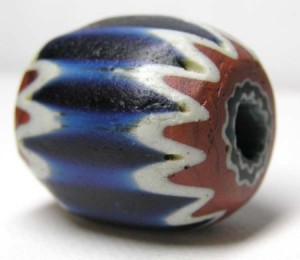
Chevron Bead
Morocco’s Trade Bead and Treasure Hunting tour offers accommodations at Moroccan Riads and the opportunity to experience their fine cuisine. During the Moroccan Treasure Hunting tour enthusiasts will stay at a restored Palace Riad in Marrakech, a peaceful spiraling Riad with views of the sea in Essaouira, a tranquil property in Tarodaunt with bungalows that is surrounded by lush gardens and a modern, Moroccan Kasbah in Ouarzazate with views of the Atlas Mountains.
Other options on this once in a life time Moroccan jewelry tour include a visit to Jacque Majorelle’s magnificent gardens in Marrakech, the old medina in Essaouira and it’s Portuguese ramparts. A visit to the the Valley of Nomads nestled under the Mgoun mountains and the Dades Gorge are also part of this unique program.
Book Today! Call 1800-787-8806 or info@travel-exploration.com
Don’t miss a bead!
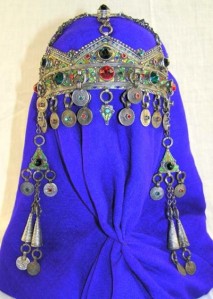
Berber Moroccan Headress
MOROCCAN TREASURE HUNTING TOUR PROGRAM – SEPTEMBER 16th – 29th, 2011
SEPTEMBER 16th: MARRAKECH ARRIVALS – AIRPORT TRANSFER
►Airport arrivals in Marrakech. Transfer to Riad Palais Sebban.
►All to meet up at Riad Palais Sebban by 3:00pm.
►Visit the Tiskiwin Museum, a private museum dedicated to popular arts & crafts, styled as a beautiful Spanish-Moroccan house, next door to Dar Si Said palace, a smaller version of the Bahia.
►Tiskiwin Museum Lecture: You will have a first hand viewing of the Tiskiwin and listen to a one-hour lecture and exploration of its history, be shown its private bead and jewelry collection.
►Afternoon treasure hunting.
►Welcome Evening – Appetizers & Drinks at Riad Palais Sebban. A chance to meet your fellow travelers and an overview of the route and the jewels we may find. A display of Tuareg pieces of jewelry with a Tuareg trader on hand to explain the styles and symbolism of the jewelry.
►Spend the night at Riad Palais Sebban.
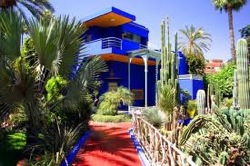
Majorelle Gardens in Marrakech
SEPTEMBER 17th: MARRAKECH (9:00am – 2:30pm OPTIONAL – GUIDED HALF- DAY HISTORICAL TOUR & TREASURE HUNTING)
►Breakfast at your Riad. Begin your one-day Historical Tour of Marrakech.
►Your introduction to Marrakech will begin in the new city, we will navigate our way to French, Gueliz and head to the Majorelle Gardens, a magical and lush small garden estate designed by Jacque Majorelle and maintained by Yves Saint Laurent. The Majorelle Garden is filled with colorful walkways, ponds, cactus and plants as well as a beautiful shop with hand-made goods. On our return to your hotel, we will pass by the La Mammounia Hotel Garden (where Alfred Hitchcock wrote the famous film The Birds).
►Visit the 19th Century Bahia Palace, originally built for Si Moussa, a former slave who became King Moulay Hassan’s chamberlain. The palace holds a courtyard and riads decorated with and the most beautiful carved stucco, Arabic architecture. Next visit the 16th Century Saadian Tombs and El Mansour mosque. Marrakech is a city of underground channels built by the architects from Cordoba, Spain to provide water for the town and Palmery.
►Next visit the old, Medina, the old quarter of the Marrakech. From here we will explore this historically charming area by foot. In Djemma el Fna, you will visit the famous 12th century Koutouba Mosque and its influential minaret.
►Afternoon treasure hunting in the Souks of Marrakech.
►Spend the night at Riad Palais Sebban.
SEPTEMBER 18th: MARRAKECH – ESSAOUIRA (12:30pm -2:30pm OPTIONAL – Half-Day Guided Historical Tour)
(Driving Time: 2 1/2 Hours)
►Breakfast at your Riad in Marrakech.
►Departure for Essaouira in the morning. Take the road to visit the seaside port of Essaouira. The journey to this former Portuguese fishing village offers up only a few roadside towns and the occasional Berber village. In the ’60s and ’70s, Essaouira was a pitstop on the hippie trek from Marrakesh. Jimi Hendrix made the pilgrimage, as did Bob Marley and Cat Stevens. Essaouira was the inspiration for Hendrix’s song “Castles Made of Sand.”
►Witness the Argan goats in trees nestling in to eat away at the Argan nuts which are typically used in making Argan Oil, Butter and Cosmetics.
►Arrive in Essaouira. Check into your Hotel. Take a half-day Historical Tour.
► Have lunch at the fish-grill cafes, with wooden tables and benches laid out overlooking the sea.
► The journey to this former Portuguese fishing village offers up only a few roadside towns and the occasional Berber village. In the ’60s and ’70s, Essaouira was a pitstop on the hippie trek from Marrakesh. Jimi Hendrix made the pilgrimage, as did Bob Marley and Cat Stevens. Essaouira was the inspiration for Hendrix’s song “Castles Made of Sand”. Visit this sea-side medieval town that boasts lovely white-washed and blue-shuttered houses, colonnades, thuya wood workshops, art galleries and mouthwatering seafood. Once called Mogador by European sailors and traders, Essaouria is known for its annual Gnaoua Music Festival that attracts 300,000+ people in June. It also has an expansive beach for surfing called Plage de Safi. Take a stroll along the town’s sunlit pedestrian main square, Place Prince Moulay el Hassan and the Skala du Port, the fishing harbor, offers breathtaking views of the Portuguese ramparts. Explore the ramparts and the spice and jewelry souks of the medina. The medina of Essaouira (formerly “Mogador”) is a UNESCO World Heritage listed city, as an example of a late-18th century fortified town.
► After your historical tour, continue treasure hunting in Essaouira.
►Dinner Recommendations: Taros or El Mer, Essaouira’s top eats with sea views and fresh fish.
►Spend the night at Palais Des Ramparts in Essaouira.
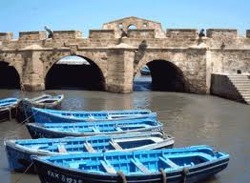
Essaouira Portuguese Ramparts & Boats
SEPTEMBER 19th: ESSAOUIRA
▶Rise, breakfast at your Hotel.
▶Bead & Jewelry Hunting in Essaouira:
Take time out in Essaouira’s old medina to visit the jewelry shops that specialize in antique Venetian beads, Berber Silver, Amber and Copal.
►Dinner Recommendations: Taros or El Mer, Essaouira’s top eats with sea views and fresh fish.
►Spend the night at Palais Des Ramparts in Essaouira.
SEPTEMBER 20th: ESSAOUIRA – TAROUDANT
(Driving Time: 6 Hours)
►Rise, have breakfast at your Riad in Essaouira, then take the road to Tarodaunt.
►Dinner and Spend the night at Riad Zitoune Taroudant.
SEPTEMBER 21st: TAROUDANT
►Rise, have breakfast at your Riad in Tarodaunt.
►Shop the Souks of Tarodaunt.
►Taroudant is a Moroccan city located in the Souss Valley in the southern part of the country. It is situated east from Agadir on the road to Ouarzazate and south from Marrakech. It has the feel of a small fortified market town on some caravan route. It is also known for its local crafts like jewelry and carpets Taroudant is often referred to as the “Grandmother of Marrakech” because it is a scaled down, slowed down town that resembles Marrakech with its surrounding ramparts. Unlike Marrakech, Taroudant contains almost the whole city within its walls.
►Visit the old medinas’ ramparts with a guided two-hour tour then spend the rest of the afternoon exploring the souk of Taradount and treasure hunting in its shops that are filled with antique silver, beads and shaded alleys occupied by gentle craftsman and shop owners.
►Dinner and Spend the night at Riad Zitoune Taroudant.
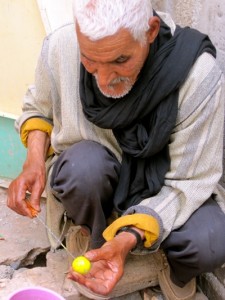
El Haj Bead Making in Taradount
SEPTEMBER 22nd TAROUDANT
►Rise, have breakfast at your Riad in Taradount then take the road to spend an entire day watching the Bead-making Process, rare demonstrations of Bead-making traditions. Lunch during your Bead-Making workshop.
►View The Bead-Making Process:
View the bead-making process detail at the workshop where you can create your own jewelry from the beads that you have seen produced that day – which will be yours to keep as a souvenir of your visit. There will be access to a wide selection of beads available.
►Bead Demonstration Of Rare Bead-making Traditions:
During your workshop you will have the opportunity to witness a demo of three different styles of bead making. Bead making enthusiasts will enjoy this demonstration as it will enable them to view how old traditions are still be practiced, produced and carried on in Morocco. Some of these traditions include utilizing couscous and other original Moroccan traditions to create beads. Travel Exploration Morocco was the first agency to record this “rare” bead-making process and your group will be second to experience it first hand.
►There will be an opportunity to also purchase beads and special silver and other Moroccan Jewelry during your Bead Making Workshop in Taroudant.
►Lunch in Taroudant at La Valla, a local restaurant in Taradount or at the Bead-Making workshop. After lunch continue Moroccan Bead and Jewelry Treasure Hunting or return to your Riad to relax for the evening.
►Dinner and Spend the night at Riad Zitoune Taroudant.
SEPTEMBER 23rd: TAROUDAUNT – TAZNAGHT- OUARZAZATE
►Breakfast at your Riad. Then take the road to Ouarzazate.
►En route to Ouarazate, you will stop at the Taliouine Saffron Cooperative. Taliouine is the traditional area of cultivation of saffron in Morocco and has been for hundreds of years. The Taliouine Souktana cooperative is on the road to Taroudant, in the village of Taliouine, in the heart of Sirwa Mountains. The Taliouine Cooperative sells only a truly biological saffron, cultivated according the traditional ways, with natural fertilizers . The mountains dry climate is ideal for such a culture.
►After visiting the Taliouine Saffron Cooperative , continue the road to Ouarzazate.
►Dinner and Spend the night at Riad Dar Chamaa in Ouarzazate.
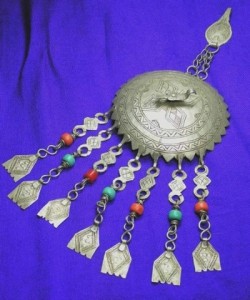
Ait Atta Headdress Pendant
SEPTEMBER 24th: OUARZAZATE (MORNING JEWELRY SHOPPING & VISIT OF THE ATLAS FILM STUDIO OR OPTIONAL AFTERNOON VISIT OF OUARZAZATE)
►Rise early, breakfast at your Riad and then spend the morning jewelry shopping in Ouarzazate. Lunch near Kasbah Taourirt.
►Discover treasure hunting in this calm, oasis of Southern Morocco that was originally an administrative center during the French Protectuate. Discover jewelry just outside Kasbah Taouirt and in the old market alongside the smells of Berber Amber and Musk.
►Have a walk across from the antique jewelry shops and option to visit Kasbah Taourirt. Kasbah Taorirt was built by the Glaoui. Its location was strategic for trading routes and in the 1930’s when the Glaoui ruled the South it was then one of Morocco’s largest Kasbahs. Explore its nooks and crannies and discover some local female painters who sell their art inside as well as the many quality silver shops just steps outside the Kasbah.
►In the afternoon, visit the Atlas Film Studios. The Atlas Film Studios studios are flanked by Holly-wood style Egyptian figures and cover 30,000 sq m of desert. David Lean filmed Lawrence of Arabiaat The Atlas Film Studios in the early 1960’s. Since then many famous directors have followed in his footsteps to exploit the magnificent scenery. International blockbusters shot here in recent years include: the French version of Cleopatra, Bertolucci’s Sheltering Sky, Scorsese’s Kundun, Gillies MacKannon’s Hideous Kinky, Ridley Scott’s Gladiator, Black Hawke Down, Oliver Stone’s Alexander The Great, Ridley Scott’s Kingdom of Heaven, and Penelope Cruz’s Sahara. Most of the filming takes place in the desert in the south however you can view the Tibetan monastery featured in Scorese’s Kundan and an Egyptian temple from Cleopatra. This ends your Morocco Travel experience.
►Dinner & Spend the night at Riad Dar Chamaa.
SEPTEMBER 25th: OUARZAZATE (JEWELRY SHOPPING)
►Rise early, breakfast at your Riad and then take the road to visit the Ouarzazate region and its famous Kasbahs. Jewelry Shopping and Explore Ouarzazate.
►Dinner at La Kasbah Des Sables in Ouarzazate. Le Kasbah Des Sables is a gastronomic experience with a menu that combines the cuisine of Fes, Meknes, Tangier, Arab and Berber with first class fare. This restaurant offers a museum- quality atmosphere as its’ decor has been hand stitched together and is filled with Berber, Morocco traditional furniture and art that was hand crafted by local artisans in the Ouarzazate region. Each section of the restaurant offers an intimate environment and the opportunity to eat on tables that are hand painted and adorned with silver fibulas, Amber and other regional jewels.
►Spend the night at Riad Dar Chamaa.
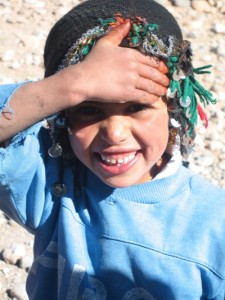
Berber Girl, Nomad in Bouthgrar's Valley of Nomads
SEPTEMBER 26th: OPTION EXCURSION TO THE VALLEY OF ROSES – VALLEY OF NOMADS – DADES VALLEY OR RELAX AT THE RIAD OR CONTINUE JEWELRY SHOPPING
(Driving Time: 2 1/2 Hours)
►Breakfast at your Riad. Take the road to visit Bouthgrar, the Valley of Nomads and the Dades Valley. En route visit Kasbah Amerdihl in Skoura and it’s one thousand Kasbahs and palmary.
►Begin your visit at the breakthtaking Valley of Nomads. Located in Bouthgrar is the Valley of Nomads, a beautiful 10 kilometer valley where Nomads live in caves that are surrounded by Mount Mgoun. Mount Mgoun is the second highest mountain in Morocco and boasts extraordinery views. Have tea with a Nomad family. See first hand where they make their own carpets and co exist in Bouthgrar with other Nomad families.
►Your journey will then take you through the Dades Valley which covers 125 km between Ouarzazate and Boumalne du Dadès in the High Atlas Mountains.
►Once you reach Boumalne at first sight you notice the limestone cliffs with uniquely shaped erosions and superb scenery and the valley’s pise (windy roads). Driving along you will pass flower filled fields, fertile fields, riverbanks and several fortified ksours. At the bottom of Gorge of Boumalne Dadès there are ruined hilltop Kasbahs and valley floor gardens.
►Lunch will be served at a nearby guesthouse that offers local Moroccan fare and a panoramic view. Relax and sip mint tea while gazing at the impressive valley view.
►Dinner & Spend the night at Riad Dar Chamaa.
SEPTEMBER 27th: OUARZAZATE – MARRAKECH
►Rise, have breakfast at your Riad and then take the road to Marrakech.
►“See Ouarzazate and die” are feelings often expressed by Moroccans with regards to this magical city that is the door to the Sahara Desert. Located just four hours from Marrakech, Ouarzazate is the main Berber city in the south known for its spectacular sunsets and dramatic mountain and desert scenery. Surrounded by breathtaking valleys, Ouarzazate was once crossing point for African traders seeking to reach northern cities in Morocco and Europe. During the French period, Ouarzazate expanded considerably as a garrison town and became the administrative centre of the Zagora region. Ouarzazate became famous when it’s nearby Kasbah; Ait Benhaddou appeared in the 1962 film Lawrence of Arabia.
► Then take the road to Ait Benhaddou. Located 32 km from Ouarzazate lies the picturesque village. Aït Benhaddou of Aït Benhaddou is situated in Sous-massa Draon a hill along the Ouarzazate River. Lawrence of Arabia was filmed here and Orson Welles used it as a location for Sodome and Gomorrah; and for Jesus of Nazareth the whole lower part of the village was rebuilt. In recent years more controlled restoration has been carried out under UNESCO auspices. Aït Benhaddou is one of many locations in this region used for shooting Hollywood films. Aït Benhaddou which once served as the former caravan route between the Sahara and Marrakech in present-day Morocco. Most of the town’s inhabitants now live in a more modern village at the other side of the river; ten families however still live within the ksar. Your guide will lead you on a private tour through this Berber village of towered and crenulated Kasbahs that once guarded the lucrative caravan route through the Atlas Mountains. Explore the Kasbahs by foot with the option to ride a donkey across a river. Aït Benhaddou which once served as the former caravan route between the Sahara andMarrakech in present-day Morocco. Most of the town’s inhabitants now live in a more modern village at the other side of the river; ten families however still live within the ksar. Enjoy lunch at a Kasbah that overlooks Ait Benhaddou. Next, visit Kasbah Taouirirt. Kasbah Taorirt was built by the Glaoui. Its location was strategic for trading routes and in the 1930’s when the Glaoui ruled the South it was then one of Morocco’s largest Kasbahs. Explore Kasbah Taouirirt’s nooks and crannies and discover some local female painters who sell their art inside as well as the many quality silver shops just steps outside the Kasbah.
►During your journey to Marrakech you will also pass the olive groves of the Oued Zat, as you ascend onto the Tizi-N-Tichka Pass Road. Built by the French in the 1920’s, the Tizi-N-Tichka Pass can be described as having mountainous barriers, Mediterranean and oceanic influences and desert borders. long the route you will see panoramic views of the High Atlas Mountains as well as sights of fertile valleys, blue and red colored pise villages and other striking mineral environments.
►En route stop for lunch and visit the Argan Cooperative where Argan Oil, Butter and Cosmetics are made with the Argan nut by hand as Berber women crack the nuts and the grind them one by one. Have a complimentary tasting. This cooperative is run entirely by women. Lunch in the village of Tadart.
►Arrive in Marrakech. Evening Free.
►Spend the night at Riad Palais Sebban in Marrakech.
SEPTEMBER 28th: MARRAKECH (JEWELRY SHOPPING & EXPLORATION)
►Rise early, breakfast at your Riad. Free Day to Shop the Souks of Marrakech for the special Moroccan Beads and Jewelry you missed out on the first time around.
►Sarah Corbett is available by arrangement for morning shopping guidance.
►Jewelry & Treasures of Marrakech Viewing:
Evening viewing at a celebrated Jewelry store in the Spice markets of Marrakech. Enjoy a two- hour viewing of fabulous beads, jewels and local silver pieces available for purchase and historical discussion about the origin and meaning of these pieces.
►Spend the night at Riad Palais Sebban in Marrakech.
SEPTEMBER 29th: MARRAKECH MENARA AIRPORT DEPARTURES:
▶Breakfast at your Riad. Departure from Marrakech’s Menara Airport.
▶ALL AIRPORT DEPARTURES from Riad Palais Sebban
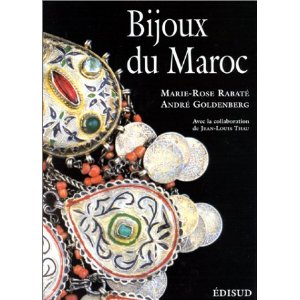
Bijoux du Maroc Book
________________________________________________________
COST PER PERSON:
$4,325 USA /2,675 GBP / 3,030 EUROS
SINGLE SUPPLEMENT:
$950 USA /652GBP /579 EUROS
Sarah Corbett, North African Jewelry Expert & Bead Tour Host Treasure Hunting in Agdz
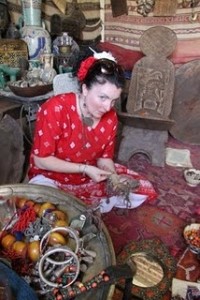
Sarah Corbett- North African Jewelry Expert
For more information about Morocco’s Treasure Hunting Tour of North African Silver Jewelry & Trade Beads
For more information about Travel and Tours to Morocco plus highlights on Moroccan culture visit Morocco’s Imperial Cities, Seaside Resorts,Sahara Desert, Berber villages, A Taste of Morocco, Magical Kasbahs, Ruins & Waterfalls, Absolute Morocco, The Best of Marrakech, Fes, and Ouarzazate
 Travel Exploration specializes in Morocco Travel.We provide Tours and travel opportunities to Morocco for the independent traveler and tailor-made tours for families and groups with a distinctly unique flavor. From Morocco’s Seven Imperial Cities, to the Magical Sahara Travel Exploration offers a captivating experience that will inspire you. At Travel Exploration we guarantee that you will discover the best of Morocco! Call Travel Exploration at 1 (800) 787-8806 or 1 (917)703-2078 and let’s book a tour to Morocco for you today.
Travel Exploration specializes in Morocco Travel.We provide Tours and travel opportunities to Morocco for the independent traveler and tailor-made tours for families and groups with a distinctly unique flavor. From Morocco’s Seven Imperial Cities, to the Magical Sahara Travel Exploration offers a captivating experience that will inspire you. At Travel Exploration we guarantee that you will discover the best of Morocco! Call Travel Exploration at 1 (800) 787-8806 or 1 (917)703-2078 and let’s book a tour to Morocco for you today.
Moroccan jewelry, Trade beads, Berber jewelry, Tuareg jewelry, Saharwei jewelry, antique Moroccan silver, silver jewelry, Customized Bead making tours, Ethnic jewelry, Ethnic jewelry tours, Moroccan amber, Moroccan beads, Moroccan copal, Moroccan fibula, Tuareg silver crosses, Sarah Corbett, Vivid Trading, Moroccan jewelry shopping, Morocco Holidays, Morocco Travel, Travel Exploration, Travel to Morocco
 Travel Exploration specializes in Morocco Travel.We provide Tours and travel opportunities to Morocco for the independent traveler and tailor-made tours for families and groups with a distinctly unique flavor. From Morocco’s Seven Imperial Cities, to the Magical Sahara Travel Exploration offers a captivating experience that will inspire you. At Travel Exploration we guarantee that you will discover the best of Morocco! Call Travel Exploration at 1 (800) 787-8806 or 1 (917)703-2078 and let’s book a tour to Morocco for you today.
Travel Exploration specializes in Morocco Travel.We provide Tours and travel opportunities to Morocco for the independent traveler and tailor-made tours for families and groups with a distinctly unique flavor. From Morocco’s Seven Imperial Cities, to the Magical Sahara Travel Exploration offers a captivating experience that will inspire you. At Travel Exploration we guarantee that you will discover the best of Morocco! Call Travel Exploration at 1 (800) 787-8806 or 1 (917)703-2078 and let’s book a tour to Morocco for you today.






